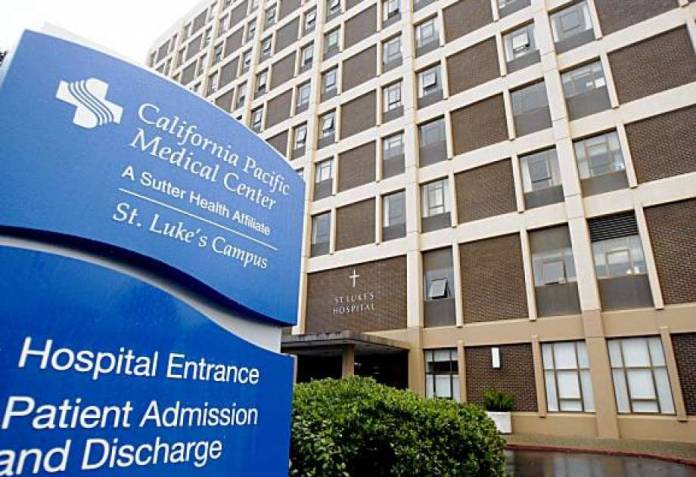
The Board of Supes celebrated a significant victory today when California Pacific Medical Center’s director, Dr. David Browner, announced that St. Luke’s hospital will not send 24 sub-acute care patients out of town when it shuts down its 24-hour critical nursing center.
It was a huge victory for community activists, who have challenged the big hospital chain’s decision to close the center, which provides comprehensive care for adults with high needs, such as ventilators.

Sups. Hillary Ronen and Ahsha Safai negotiated the deal with CPMC as the board was preparing to hold a hearing on the lack of sub-acute skilled nursing care in a city where the population is aging.
Both of them noted that it’s rare for a giant corporate entity (and CPMC, while technically nonprofit, is a giant corporate entity) to bow to community pressure and reverse what was a decision set in stone just a few weeks ago.
But it became clear in the hearing that Browner had made only a short-term promise: The existing patients at the facility will remain at some CPMC campus within San Francisco until they die or are discharged. He made no commitment to accept new patients or to keep any sub-acute beds available in any CPMC facilities.
That’s a huge deal: Without the St. Luke’s facility, San Francisco would be the only county in the Bay Area without sub-acute beds. Browner talked about the need for a “regional solution,” but when Safai asked him specifically if he would agree to keep sub-acute beds as part of CPMC’s future, he stood silent, then stepped away.
For the record, CPMC is owned by Sutter, a multibillion-a-year nonprofit with $4 billion in assets, according to federal filings.
From Browner’s comments, it appeared that CPMC was looking for ways to get public money to underwrite sub-acute beds.
Barbara Garcia, the director of public health, acknowledged that the city is facing a crisis: there are nowhere near as many sub-acute facilities as San Francisco needs.
That’s just part of the looming crisis in health care for an aging population in the city and the region, and Carolyn Goossen, an aide to Ronen, told me that the Public Safety and Neighborhood Services Committee, a rare panel under President London Breed’s appointments that has a progressive majority, will take up the issue in November.
Garcia talked a lot of about existing task forces, and discussion with the hospital associations, but the reality is that skilled nursing facilities are expensive and the likes of Sutter — which focuses on the bottom line, not public service — don’t want to provide them.
But we have to get on this. None of us are getting any younger.

One down, twenty three to go. They got care and would get good care in another facility outside the Bay Area. Unless that is they are there for many years like a nursing home.
St. Luke's sub-acute unit has recently discharged a patient to their home. I'm not really sure your point – these people deserve care.
All of the patients in St. Luke's sub-acute are long term. The average stay of short term sub acute patients is 20 days. If those 24 patients were short term, there wouldn't have been any concern that closing the facility in several months would affect them.
The reason they would need to be moved out of town is because they're long term. That's such a big deal to their families because St Luke's is essentially a nursing home where they are expected to stay until they die.
Sub-acute care doesn't translate to never recovering or leaving the hospital. The majority of the patients at St. Luke's are under the age of 65.
Nowadays the lion's share of hospital profits are based on market share, and the factors that bolster this. Sub-acute facilities don't increase market share and are rapidly on the decline since their heyday in the 90's.
Sutter is greatly increasing it's market power in SF, which will in turn increase it's annual patient-care surplus. CPMC is Sutter's largest facility, and the new campus is to be their crown jewel. Currently UCSF creates a larger surplus and is more esteemed, but Sutter has it's eye on the prize. http://www.modernhealthcare.com/article/20160502/NEWS/160509991
Yes, none of us are getting younger. But alos none of us want(or would willingly choose) to live the final several(many) years of our lives in a "sub acute facility" unable to breathe on our own or permanently connected to devices that keep us bedridden, without privacy, and unable to even go outside at all. That's not life. It's death without burial. Maybe its time to stop the madness. Accept mortality as a blessing. And just maybe, even see mortality as an imperative to do something good in the world today while we have the ability.